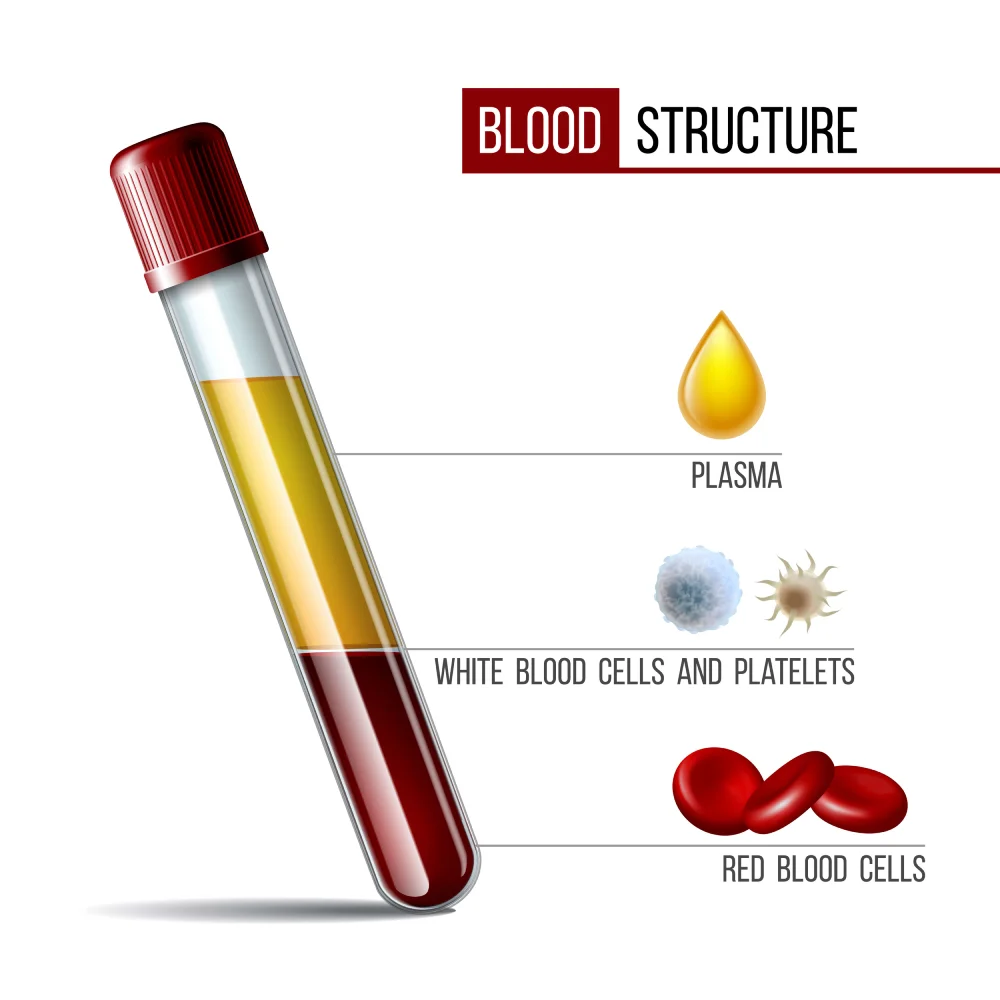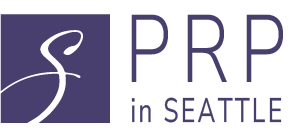Diffuse thinning in women often appears as a widening part and overall loss of volume across the scalp, driven by genetics, postpartum and perimenopausal hormone shifts, stress, nutritional gaps, or PCOS. Without targeted treatment, miniaturized strands continue to thin, scalp visibility increases under bright light, ponytails look smaller, and styling becomes limited.
PRP hair restoration at PRP in Seattle provides a non-surgical, biologic solution tailored to female pattern hair loss by delivering concentrated platelet growth factors across priority zones to reduce shedding, re-activate follicles, and improve density for fuller coverage.


Understanding Diffuse Thinning in Women
Female pattern hair loss represents the most common cause of hair loss in middle-aged women. The condition develops when hair follicles gradually shrink over time, producing thinner, shorter hairs and reducing overall hair volume.
Another common pattern called telogen effluvium causes large numbers of hair follicles to suddenly enter the resting phase. Severe illness, surgery, emotional stress, hormonal changes, or poor nutrition can trigger this shift. The condition typically appears 2-3 months after the triggering event, explaining delayed hair loss following stressful periods.
Common Causes of Diffuse Hair Loss in Women
Hormonal Changes: Pregnancy, menopause, thyroid problems, polycystic ovary syndrome (PCOS), and birth control medications disrupt normal hair growth cycles.
Nutritional Gaps: Iron deficiency, low vitamin D levels, inadequate protein intake, and zinc deficiency weaken hair follicles and trigger shedding.
Medical Conditions: Autoimmune diseases, scalp infections, and ongoing inflammatory conditions contribute to progressive hair thinning.
Stress and Lifestyle: Chronic stress, crash dieting, and severe physical or emotional trauma trigger sudden hair loss.
Women often notice increased shedding during washing, gradually widening parts, and more visible scalp. The subtle, gradual progression makes early detection challenging, emphasizing the importance of professional evaluation for accurate diagnosis and treatment planning.
What Is PRP Hair Restoration?
Platelet-rich plasma (PRP) therapy uses concentrated growth factors from the patient’s own blood to stimulate hair follicle growth. The treatment addresses hair loss, excessive shedding, and thinning across the scalp through a simple injection process.
The PRP Process
Blood collection produces a small sample from the patient. A special machine called a centrifuge spins the blood to separate the healing components from red blood cells. The result is platelet-rich plasma containing growth factors at 3-5 times normal blood levels.
Injection into thinning areas delivers these growth factors directly to hair roots. The concentrated platelets improve follicle health by boosting blood flow, activating repair cells, and waking up dormant follicles.
The Science Behind PRP for Hair Growth
Platelet-rich plasma contains numerous growth factors stored in tiny packets within platelets. These growth factors act on stem cells in the hair follicle, triggering new follicle development and promoting new blood vessel growth.
Key growth factors work together to:
- Extend the growth phase of hair follicles
- Increase follicle size and hair thickness
- Stimulate new blood vessel formation around follicles
- Reduce inflammation affecting follicle health
- Activate dormant follicle stem cells


How PRP Helps in Diffuse Thinning in Women
PRP addresses diffuse thinning through multiple biological mechanisms that target the root causes of hair loss. Unlike topical treatments that work on the surface, PRP injections deliver concentrated growth factors directly to hair follicles, triggering regeneration at the cellular level.
Reactivating Dormant Hair Follicles
Diffuse thinning occurs when hair follicles enter an extended resting phase and stop producing new hair. PRP contains powerful growth factors that signal these dormant follicles to reenter the active growth phase. The concentrated platelets essentially wake up sleeping follicles, prompting them to begin producing hair again.
Strengthening Existing Hair Follicles
PRP growth factors increase the size of shrinking hair follicles. As follicles enlarge, they produce thicker, stronger hair shafts. This process reverses the miniaturization that characterizes female pattern hair loss, transforming fine, weak hairs into healthy, robust strands.
Improving Blood Flow to the Scalp
Adequate blood supply delivers essential nutrients and oxygen to hair follicles. PRP stimulates new blood vessel formation around follicles, improving circulation in the scalp. Enhanced blood flow ensures follicles receive the nourishment needed for optimal hair production and growth.
Extending the Growth Phase
Hair grows in cycles consisting of growth, transition, and resting phases. In diffuse thinning, the growth phase shortens while the resting phase lengthens, resulting in less hair production. PRP prolongs the active growth phase, allowing hair to grow longer and thicker before entering the resting phase.
Reducing Inflammation
Chronic low-grade inflammation in the scalp contributes to hair follicle damage and hair loss. PRP contains anti-inflammatory properties that calm scalp inflammation, creating a healthier environment for hair growth. This reduces the stress on follicles and prevents further damage.
Reversing Hormonal Damage
Hormonal imbalances, particularly elevated androgens, cause follicles to shrink and produce weaker hair. PRP counteracts this damage by providing growth signals that override hormonal suppression. The treatment helps restore normal follicle function even in the presence of hormonal challenges.
Building Follicle Stem Cell Activity
Hair follicles contain stem cells responsible for generating new hair growth. PRP activates these stem cells, enhancing their regenerative capacity. This activation increases the follicle’s ability to produce new hair and maintain healthy growth cycles over time.
Benefits of PRP for Diffuse Thinning in Women
Clinically Proven Results for Female Hair Loss
Multiple studies published in leading medical journals demonstrate PRP effectiveness for hair restoration. Research shows improved hair growth, increased hair count, and enhanced hair thickness in patients with various types of hair loss.
Clinical trials report 30-40% hair regrowth in most patients. The greatest benefits occur in patients with chronic shedding, those treated for 6 months or more, and those receiving proper PRP volumes.
Natural, Safe Hair Restoration Treatment
PRP offers a natural treatment approach without drugs or hormones. The therapy uses growth factors from the patient’s own blood, eliminating risks of allergic reactions or drug side effects. The body recognizes its own cells, ensuring complete safety.
Minimal Downtime and Side Effects
PRP therapy requires virtually no recovery time. Treatments take 30-60 minutes. Patients tolerate injections well with minimal discomfort. Side effects remain minor and temporary, typically limited to mild scalp tenderness at injection sites.
Superior to Traditional Hair Loss Medications
PRP demonstrates greater effectiveness than standard topical and oral medications for many patients. The treatment avoids side effects associated with finasteride (sexual problems in men) and minoxidil (unwanted facial and body hair growth in women).
Targeted Treatment for Women’s Hair Loss Patterns
PRP proves particularly effective for women experiencing diffuse thinning on the crown and top scalp. The treatment counteracts hormonal imbalances contributing to hair shrinkage. The approach addresses unique patterns and causes of female hair loss through customized protocols.
Long-Lasting Hair Restoration Results
Noticeable improvements occur within several weeks following an initial treatment series. Results last 3-5 years with proper maintenance. Periodic touch-up treatments maintain results indefinitely. This longevity makes PRP cost-effective compared to daily medications requiring ongoing purchases.
Process of PRP Hair Restoration
Initial Consultation and Evaluation
Comprehensive evaluation assesses hair loss pattern, medical history, and overall scalp health. Specialists determine PRP therapy suitability for specific types of diffuse thinning. The consultation establishes realistic expectations and develops personalized treatment plans.
Blood Collection and PRP Preparation
A small blood sample undergoes spinning to separate components. Special filters extract platelet-rich plasma containing concentrated growth factors. The preparation sits briefly before loading into syringes for scalp injection.
Treatment Administration Technique
Strategic injections deliver PRP effectively with minimal discomfort. This technique allows PRP to spread across treatment areas while requiring fewer individual injections. Ice application before treatment reduces discomfort. Most patients report pressure sensation with minimal pain during the 30-60 minute procedure.
Post-Treatment Care Instructions
Mild scalp soreness commonly occurs after injection. Patients take a hot shower upon returning home. Treatment sites remain clean. Avoid topical hair products and hair coloring for 48 hours. Most patients resume normal activities immediately following treatment.
When Do Results Become Visible?
Improvements become noticeable after approximately three months. Most patients observe reduced shedding within 2-3 months. Visible improvement in hair thickness and volume appears at 4-6 months following treatment start. Results continue improving with time. The greatest benefits appear after 6 months of consistent treatment.
Hair pull tests show significant decreases in hairs pulled. Hair thickness and volume improve compared to pre-treatment levels. Results remain most noticeable at six months for scalp injections and continue improving with maintenance protocols.
Combining PRP with Other Hair Loss Treatments
Working Together with Other Treatments
PRP delivers optimal results when combined with other medical treatments. Evidence suggests PRP works best alongside topical or oral minoxidil (Rogaine) and oral finasteride (Propecia) for pattern hair loss. The combination approach addresses hair loss through multiple pathways, enhancing overall effectiveness.
PRP combines effectively with microneedling for scalp stimulation. Low-level laser therapy complements PRP by further stimulating follicles. Nutritional supplementation supports follicle health alongside PRP treatment.
Lifestyle Changes for Enhanced Results
Proper nutrition supports PRP treatment effectiveness. Adequate protein intake, iron supplementation when deficient, vitamin D optimization, and biotin supplementation enhance hair follicle function. Stress management techniques reduce sudden shedding triggers. Appropriate hair care routines minimize mechanical damage and breakage. These complementary approaches enhance treatment effectiveness and maintain results long-term.
Contact Us
Fill out the form below to schedule your appointment or ask any questions you have.
What is the Cost of PRP Hair Restoration
PRP hair restoration starts at $3,500 for 6 treatments in Seattle. This comprehensive package includes initial consultation, all treatment sessions, and follow-up evaluations monitoring progress. After the initial series, patients typically require only 1-3 PRP injections annually, drastically reducing ongoing treatment costs.
Insurance typically does not cover cosmetic hair restoration procedures. PRP injections may receive insurance coverage if hair loss results from disease or illness. Generally, PRP injections for hair restoration represent cosmetic procedures not covered by insurance. Flexible payment options make treatment accessible.
Who Is a Good Candidate for PRP Hair Restoration?
Candidate selection significantly impacts PRP success. Women experiencing diffuse thinning due to hormonal changes, stress, nutritional gaps, or genetic factors typically respond well. Early-stage hair loss shows better results than advanced thinning. Patients with adequate remaining hair follicles achieve optimal outcomes.
Specific conditions responding well to PRP include:
- Female pattern hair loss
- Chronic excessive shedding
- Hormonal hair loss related to pregnancy, menopause, or PCOS
- Stress-induced diffuse thinning
- Nutritional deficiency-related hair loss
Who Should Avoid PRP Treatment
Underlying disorders such as thyroid disease or lupus limit PRP effectiveness because these conditions continue causing hair loss over time. Active treatment of underlying conditions improves PRP outcomes. Blood thinners reduce platelet effectiveness, making the procedure less effective. Platelet disorders make treatment unsuitable.
Additional reasons to avoid treatment include:
- Active scalp infections or skin diseases
- Blood disorders affecting platelet function
- Cancer or history of cancer
- Chronic liver disease
- Low platelet counts
- Use of blood-thinning medications
Patients with complete hair loss or scarring show a limited response. Very advanced hair loss with minimal remaining follicles responds poorly to PRP, as it stimulates existing follicles rather than creating new ones.
Will there be any Risks?
PRP injections consist of the patient’s own cells and plasma. This makes the risk of allergic reaction much lower than other injectable medications like corticosteroids. The natural treatment approach eliminates concerns about drug interactions, hormonal side effects, or body-wide medication effects.
Common temporary side effects include headache and scalp discomfort, which resolve within 24-48 hours. Mild risks may consist of temporary pain, redness, minor bruising, and brief hair shedding during the initial treatment phase. These effects resolve within several days without intervention.
Why Choose PRP in Seattle for Hair Restoration
PRP in Seattle leads hair restoration technology with advanced facilities and experienced specialists dedicated to helping women overcome diffuse thinning. The comprehensive approach combines proven PRP protocols with personalized care plans designed for optimal results.
The team understands unique challenges women face with hair loss and provides compassionate, confidential treatment in comfortable environments. The latest technology and injection techniques ensure maximum growth factor concentration and optimal treatment outcomes.
Advanced Technology and Expertise
PRP in Seattle uses medical-grade equipment producing consistent, high-concentration platelet preparations. Specialized training in scalp injection techniques minimizes discomfort while maximizing PRP delivery to target areas. Evidence-based protocols follow current research for pattern hair loss, excessive shedding, and diffuse thinning patterns specific to women.
Personalized Treatment Plans
Each patient receives customized treatment protocols based on specific hair loss patterns, underlying causes, medical history, and treatment goals. Follow-up assessments track progress and adjust protocols for optimal results. Comprehensive care includes dietary recommendations, stress management guidance, and complementary treatment suggestions.
Take the First Step Toward Hair Restoration in Seattle
Diffuse thinning requires professional treatment for optimal results. PRP in Seattle offers proven, natural solutions that restore hair thickness, volume, and confidence. The expert team specializes in helping women overcome challenges of diffuse thinning with personalized PRP treatment plans designed for optimal results.
Contact PRP in Seattle today to schedule a consultation and discover how advanced PRP therapy can restore hair and confidence. Every month matters when addressing progressive hair loss. The team stands ready to provide the expertise, technology, and personalized care needed to achieve thick, healthy hair. Schedule an appointment now to begin the hair restoration journey with Seattle’s leading PRP specialists.
Frequently Asked Questions
How many PRP sessions are needed for diffuse thinning?
Most women with diffuse thinning require an initial series of 3-6 treatments spaced 4-6 weeks apart. Generally, 3-8 treatments at 4-6 week intervals are recommended for most patients. This schedule allows PRP to stimulate hair follicles effectively and promote new hair growth. Following the initial series, maintenance sessions occur every 4-6 months to sustain and enhance results. The exact number depends on hair loss severity, underlying causes, and individual response to treatment.
When will results become visible from PRP treatment?
Results become most noticeable after several months. Most patients notice reduced shedding within 2-3 months and visible improvement in thickness by 4-6 months. Results are not permanent without maintenance; patients require additional injections at intervals determined by their specialist. Improvements continue developing over time, with peak results typically appearing at 6-9 months following initial treatment series completion.
Is PRP hair restoration painful?
Ice application reduces discomfort during the procedure. Most patients feel pressure during treatment with minimal to no pain. Specialists use advanced injection techniques to minimize discomfort during the process. Numbing options are available for patients with heightened sensitivity. Post-treatment soreness remains mild and resolves within 24-48 hours.
Can PRP combine with other hair loss treatments for women?
PRP works well with other treatments. Evidence suggests PRP achieves best results when combined with treatments for pattern hair loss, such as topical minoxidil (Rogaine) or oral finasteride (Propecia). Combination approaches address hair loss through multiple pathways. PRP also combines effectively with low-level laser therapy, microneedling, and nutritional supplementation for comprehensive hair restoration.
How long do PRP hair restoration results last?
Results typically last 12-18 months with proper maintenance. With periodic touch-up treatments, results continue 3-5 years or indefinitely. Regular maintenance sessions help sustain and enhance results over time. The longevity depends on underlying causes of hair loss, hormonal factors, lifestyle factors, and sticking to maintenance protocols.
What are the side effects of PRP for hair loss?
Mild risks include temporary pain, redness, minor bruising, headaches, and temporary hair shedding during initial treatment phases. These effects remain temporary and resolve within several days. Because PRP uses the patient’s own blood components, allergic reactions are extremely rare. The treatment produces no body-wide side effects and does not interact with medications.
Will insurance cover PRP hair restoration treatment?
PRP injections may receive coverage from health insurance if hair loss results from disease or illness. Generally, PRP injections for hair restoration are considered cosmetic procedures and are not covered by insurance. Patients should verify coverage with their insurance providers. PRP in Seattle offers flexible payment options to make treatment accessible.
How does PRP compare to hair transplant surgery for women?
PRP offers a non-surgical alternative for women who are not candidates for or not ready for hair transplant surgery. While transplants provide permanent results for specific areas with complete follicle loss, PRP treats diffuse thinning across the entire scalp without surgery, scarring, or significant downtime. PRP stimulates existing follicles rather than relocating them. Many patients use PRP before considering transplants or combine both approaches for comprehensive restoration. PRP works best for diffuse thinning, while transplants address specific complete hair loss areas.
What happens during the PRP preparation process?
Blood collection obtains a small sample (typically 10-20ml) from the patient’s arm. The sample undergoes spinning at specific speeds to separate blood components by weight. This process isolates platelet-rich plasma containing growth factors at 3-5 times normal levels. Special filters or additional spinning steps further concentrate platelets. The entire preparation takes approximately 15-20 minutes before injection.
Can younger women with early hair loss benefit from PRP?
Early intervention with PRP produces excellent results for younger women experiencing initial stages of diffuse thinning. The treatment works most effectively when adequate follicles remain viable. Starting PRP during early hair loss stages prevents further progression and stimulates existing follicles before significant shrinkage occurs. Younger patients with hormonal hair loss, stress-induced shedding, or early pattern hair loss respond particularly well to PRP therapy.
